For many decades, the surgical treatment of leg varicose veins remains the only radical method of eliminating this disease and its complications.Thanks to modern technologies and the improvement of operation techniques, it is really effective, in both therapeutic and cosmetic terms, is performed as easily and painlessly as possible, well tolerated by patients and does not cause prolonged disability.
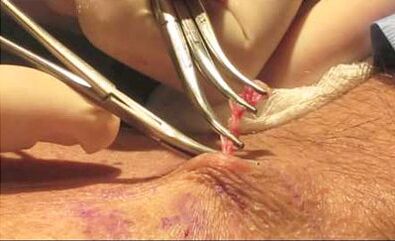
Normally, about 30% of the lower extremity blood flows through small subcutaneous venous tributaries, which merge into two central venous trunks - a large and small subcutaneous veins.These vessels are directly connected to deep veins, through which 70% of blood flows.In the places of such compounds, there are valves that pass blood only from the veins of the surface in deep.There are also dozens of small veins, additionally connecting the superficial venous network with depth.They also have valves that pass blood in just one direction.The main cause of varicose veins is the failure of venous valves, which leads to improper blood discharge: from deep veins to the surface, which increases pressure on them and leads to the expansion of small vessels and central venous trunks.The main objectives for which surgical treatment aims to varicose veins of the lower ends:
- The elimination of blood stagnation in altered superficial veins of the legs, which will prevent the progression of chronic venous insufficiency and trophic disorders on the skin.
- Removing deformed vessels and varieties representing a cosmetic defect.
- The elimination of deep vein blood discharge in the surfaces - the connection and intersection of the piercing veins (clans), as well as a large and small subcutaneous veins in the places of their connection to the deep.
- Prevention of a repeated occurrence of varicose veins.
A separate place in the surgical treatment of the veins of the veins of the lower extremities belongs to cosmetic surgery.After these interventions, not only the pathologically altered veins, but also post -operative scars on the skin of the legs, or are discreet.To achieve the maximum cosmetic effect, surgical surgery for varicose veins is performed according to the following methods:
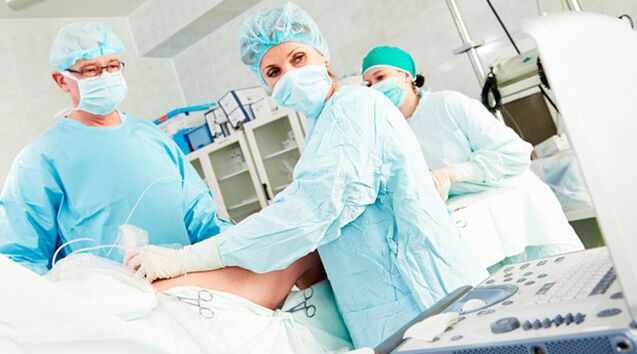
- Laser ablation or radio frequency of vein burning of the central trunks of a large, small subcutaneous vein under ultrasound control through a skin puncture in the thigh or foot.
- Sclerobliteration and stem sclerotherapy - filling large and small subcutaneous veins, as well as all their tributaries, even the smallest, with a special drug.
With any of the described treatment methods, varicose veins are not removed, but are transformed from blood vessels into a soft scar tissue.Both physical influences (laser rays, radio frequency waves) and chemical (sclerosing) compounds destroy the inner layer of the vein.Thanks to this, he loses the lumen, the glues and the desolate completely of the blood, becoming a common (scar) connective tissue.Thus, without direct removal of the veins, all objectives that are attributed to rapid treatment of the lower extremity varicose veins are achieved - altered vessels are eliminated and the dangerous consequences of venous insufficiency are eliminated in them.The only restriction of cosmetic operations in the treatment of varicose veins in women is possible only mild or limited enlarged veins to 1-2 degrees.During pregnancy and in the early postpartum period, surgical treatment is against -indicated, except for acute situations that require emergency intervention, for example, with upward thrombophlebitis.The operation is limited to the dressing of a large subcutaneous vein at the site of its connection to femoral (cruise).Consider the most common surgical interventions in the treatment of lower extremity varicose veins: laser ablation, endoscopic vein dissection and flexibility.The latter is divided into the following types:
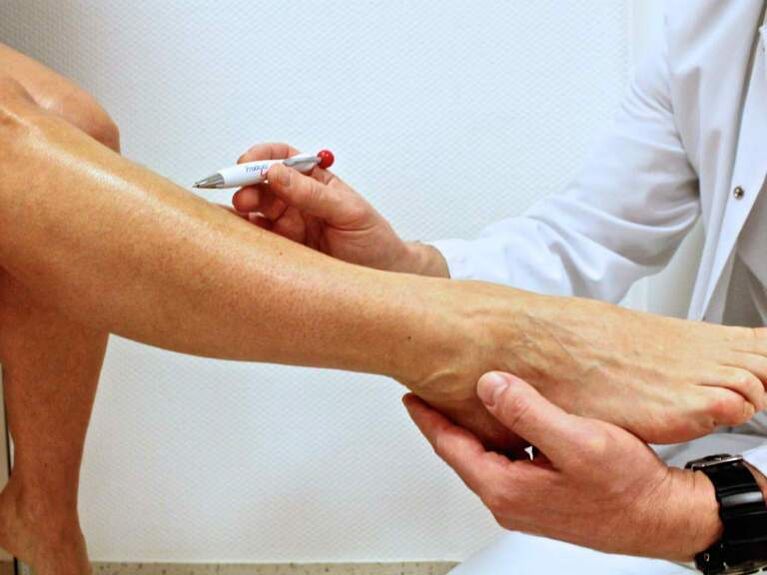
- classic operation, or complete removal or Trojanov-Trendelenburg-Bubko-Narata operation;
- Short withdrawal;
- Flebectomy.
Phlegic
The removal, the extraction of veins from the skin is called Flebectomy.This is one of the first methods of surgical treatment of varicose veins of the lower ends.But even today, flexibility is most often performed by phlegology and vascular surgeons.There are three modifications and operating methods: full and short stripping, miniflebectomy.Domestic surgeons call classic Trojanov-Trendelenburg-Bubko-Narat operation and foreign authors with complete peak authors.The intervention volume is presented:
- As a bandage of the trunk of a large subcutaneous vein in the place of confluence, 2-3 cm in the thigh under the inguinal fold, thigh, through an incision.
- Its removal throughout the groin to the foot using a special probe through two 1-2 cm skin cuts along the inner surface, near the knee and ankle.
- Removal of all varicose veins and small veins through small separate incisions is about 1-2 cm (they can be from 5-6 to 10 to 20) with the insolvent drilling healing.
- Sewing all wounds with cosmetic seams.
Classic phlebectomy allows you to remove the varicose veins, but the most traumatic among all existing techniques.
Short withdrawal
With a short background, not all the large subcutaneous vein is removed, but only its fragments, affected by varicose veins, for example, only in the thigh or leg.Healthy segments are not removed.This reduces intervention trauma, but the risk of relapse of the disease remains.Otherwise, operational operations of the operation are similar to classical flexibility.
Phlegic
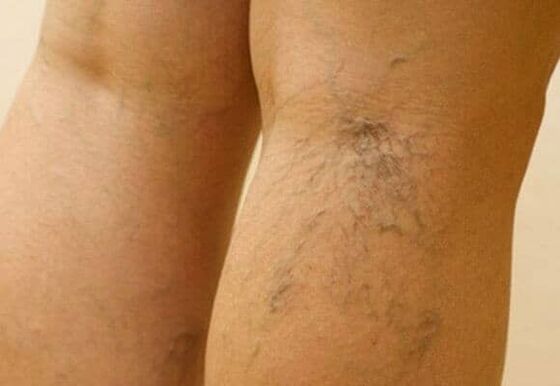
The innovative methodology to remove small varicose veins from a large subcutaneous vein is called flexeromy.For its implementation, special tools are required (scalpel pointed, hooks, staples, spatula), with which the veins are extracted through the skin of the skin several millimeters.It is not necessary to sew these skin defects, scars are invisible.Most of the time, surgeons combine a short or complete removal of a large subcutaneous vein with sakectomy.This combined operation combines radicalism and adhesive trauma with a good cosmetic effect.Laser ablation for varicose veins surrounds burning with a laser beam of a large subcutaneous vein throughout the side of its clearance.To do this, by puncturing the skin in the thigh or ankle area in the vein lumen, a cattle slope is introduced throughout its length.Under the control of the ultrasound, the svetovod is slowly extracted.The laser beam, acting on the venous wall, destroys the inner layer.As a result, Vienna Falls and stops working, which is clearly visible on the ultrasound monitor.If not only the main venous trunk is affected by varicose veins, but also their tributaries, they are removed according to the phlebectomy method.
A disease such as varicose veins is a disease characterized by vascular wall dysfunction and valve weakness in the veins, which causes stagnation in the blood vessels of the lower extremities and the appearance of venous nodes.This pathology is quite dangerous and full not only with trophic disorders and the presence of an inflammatory process, but also due to the lack of tissue nutrition.As a rule, this contributes to the formation of blood clots, which can spread through the blood flow throughout the body and the appearance of trophic ulcers difficult to live.In addition, the formation of thrombotic formations within the vessels threatens the development of a disease such as thrombophlebitis.Therefore, if the patient has varicose veins of the lower ends, surgical treatment is mandatory, especially if the disease is launched.I would like to draw the attention of readers on our site that surgery for lower extremity varicose veins is a radical measure and, as a rule, is prescribed if it cannot be without it.Varicious disease of the lower ends, surgical treatment involves various options of surgical practice for surgical treatment.These options are directly in approaching the removal of affected vessels and veins from the lower ends.
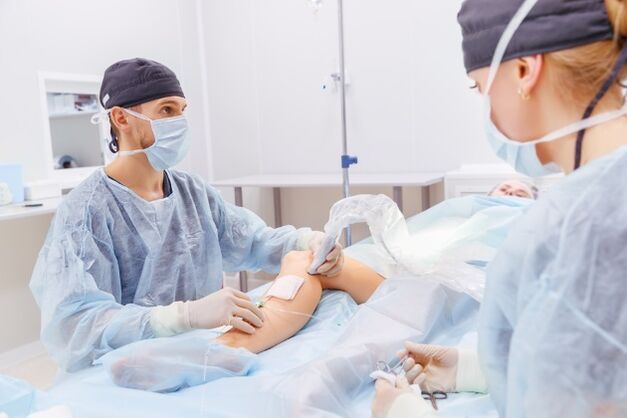
- The use of traditional flexibility in surgical practice for the radical treatment of varicose veins.This option is performed according to the Bebbok methodology.This implies the introduction of a probes projected especially for this procedure in the vessel lumen and the subsequent extract of the vein through a pre -tailored incision on the skin.After the operation, its cord is performed with a cosmetic sewing, making it almost invisible.
- Flebectomy - This operation is required to remove small sections from blood vessels and veins, affected by varicose veins.Note that this operation does not provide skin cuts, as part of the affected vessel or vein is removed by puncture on the skin, which does not require imposing seams.
Note that surgical intervention in the treatment of certain diseases is shown far.However, varicose veins of the lower ends, surgical treatment is extremely necessary if the removal of blood clots and potentially dangerous sources of the inflammatory process is required.This approach will improve the patient's condition and help to avoid bass and insecure for the patient's health and complications.States that require urgent surgery for varicose veins include:
- the presence of thrombophlebitis or the risks causing its appearance;
- Acute thrombophlebitis or frequent exacerbations of the disease;
- Extensive defeat of blood vessels and veins;
- The constantly disturbing sensation of fatigue and gravity in the legs, unpleasant pain, which indicates a clearly expressed vary;
- The appearance of trophic ulcers.
There are also certain against -Indications for operation for varicose veins:
- second and third trimester of pregnancy;
- the presence of infectious diseases in acute form;
- Exacerbation of existing pathologies in a patient (diabetes, asthma, peptic ulcer and others);
- myocardial infarction, stroke;
- Dermatological problems.
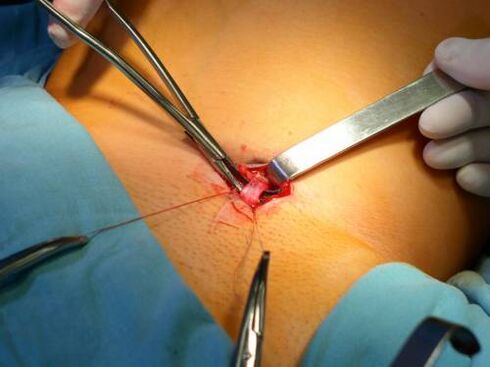
Leging - As a rule, this method is used in the presence of a small section of the lesion, this is a technique that is more spared, unlike traditional phlebectomy.The method is to lengthen, through a special hook, the venue node.There is also a subspecies of this technique - cryostropping, which implies the wreck of the damaged vessel in Cryosanda and its subsequent removal.
Sclerosis - The technique provides for the introduction of a damaged sclerosis, a special substance for the "collage" of the vessel walls.However, after the procedure, the vein does not extend, but remains in place, without fulfilling its purpose, although blood flow through Vienna and stops, however, this function is performed by collateral vessels, which does not violate the exit of venous blood.The operation is performed under the mandatory control of a specialist with ultrasound equipment.
Laser Coagulation - This method is the most innovative in the treatment of varicose veins and is the introduction of special laser radiation equipment (thin probe) into the vein lumen.The device has a precautionary effect on the blood vessel walls.
Consequences after surgery to remove varicose veins:
- The appearance of post -operative bruises characteristic on the body's surface, which, as a rule, are resolved for several months;
- In addition, after several months, the seals under the skin located along the remote vessel bed disappear;
- Violations of lymphatic system integrity (blood vessels) of blood vessels, which can lead to stagnant processes.Such post -operative consequences are conservatively treated, however, the circulation of the lymph is often restored after a few months;
- Possible damage to subcutaneous nerve endings, which manifest themselves by impaired sensitivity of the epidermis and postoperative symptoms pass after 5-6 weeks.
In short
Varicious disease surgery
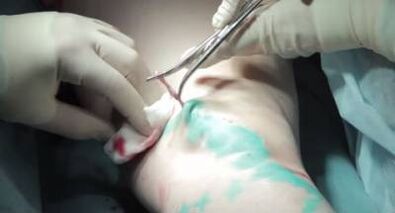
Traditionally, flexes (cruise) is performed according to the Bebcock method and consists of introducing the probe into the vein lumen with the subsequent section of the vein completely over its length by cutting the skin outside.The incision is sutured at the end of the operation with a cosmetic sewing.Flebectomy is used to remove very short areas of the vein during operation, veins are not used.Skin cuts are not performed and a piece of vein is removed through a thin skin puncture that does not require imposing seams.With a small area of damage to varicose veins, it is possible to perform a smoother technique - removal.This is extending with a thin hook of only one varicose node.The experience is performed through two skin cuts with its subsequent suture.A variety of this technique is crystaging - "sinking" from the vein to the Criosanda using low temperatures, the destructive node is also stretched.
Vienna Sclerosion is the introduction of a sclerosis in her lumen - a substance that “glues” the walls of the vein with each other, but the vein remains deep under the skin, not performing its functions.Blood flow through the vein stops and passes through collateral vessels, without violating the venous blood exit from the lower limb.Vienna sclerosis is performed under the control of ultrasound.Laser coagulation of varicose veins is the latest method in phlegology and consists of introducing a thin probe into the laser radiation vein lumen, which has a precautionary effect on the vein walls.The vein radio frequency exposure method also refers to a more modern varicose vein treatment, but not all medical institutions are equipped with appropriate equipment.The technique consists of the "cauterizing" effect on the vascular wall of the high frequency radio waves.


















